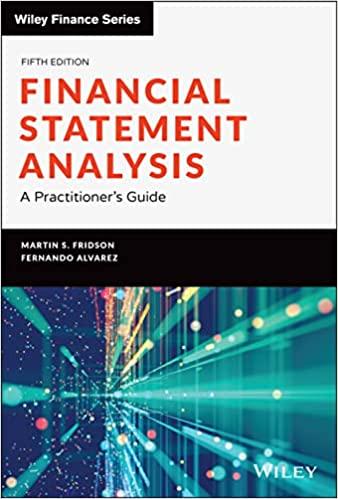Question
Your answer must be 200 words or more, you must provide a word count at the end of your answer. High-frequency trading (HFT) is a
- Your answer must be 200 words or more, you must provide a word count at the end of your answer.
High-frequency trading (HFT) is a high-speed form of buying and selling stocks and securities. Unlike traditional forms of investing, HFT uses advanced computers executing complex algorithms to buy and sell stocks within just a few seconds, or even fractions of a second. In other words, it is the ultimate form of a short-term investment. Companies that engage in HFT only own a stock for a few seconds and perform at speeds and levels that other investment companies can only dream of. By using computers, HFT allows companies to make tens of thousands of transactions per day. Thus, even though each deal only nets at most a few cents, the sheer speed and volume of HFT produces considerable profits.
In the past, traditional traders would enter buy and sell orders from the trading floor and they always had the time advantage. They could enter a trade before outsiders could react to the news cycle. Today, however, the fastest traders are plugged directly into an exchanges computer system. This puts them even one step ahead of the action on the trading floor because they receive data from the direct feed before it goes to the public tape that other traders can see.
Successful trading has always been about speedthe trader who jumps to buy a stock at $89.01 per share and sell at $92 per share is better off than the trader who delays a bit and buys at $91.05 (and still sells at $92). Today, that speed differential is amplified with HFT, with trades taking place in microseconds. (A microsecond is a millionth of a second.) The Wall Street Journal reported that it takes 200 microseconds for a trade to get from the Chicago Mercantile Exchanges data center to the Intercontinental Exchange located 33 miles away. A trader who can see whats happening in the fiftieth microsecond has an advantage over the trader reacting after the hundredth microsecond (and often over the trader acting after the fifty-first microsecond). According to recent estimates, about 50% of all trading done in the United States occurs through HFTs.
But in spite of its popularity, HFT has come under fire.
A recently conducted research study shows that HFT leads to high profits for aggressive traders, an average of $395,875 per day, but at the expense of small investors not using HFTs. This echoes criticism from legislators and regulators, who have argued for several years that HFTs put small investors at a disadvantage, since they dont have access to the same information as firms that use HFT, and consequently have to buy and sell at less favorable prices. Pete Kyle, a finance professor at the University of Maryland told the Wall Street Journal that the practice was akin to a tax on other traders because you get all the gains from being the first guy to trade. Critics also claim that HFTs create a less stable market, pointing to the Flash Crash of May 6, 2010, when the Dow Jones average fell by 1000 points and then gained it all back in the span of less than an hour. Charlie Munger, the vice chairman of Berkshire Hathaway, succinctly sums up the negative aspects of HFTs this way, Its legalized front-running. I think it is basically evil. Theres no way for a human trader to win the race against the computer.
And yet, there are many proponents of HFTs.
Charles Jones, professor of finance and economics at Columbia Business School, argues that HFTs reduce costs for trading firms, since they can hire fewer human traders, leading to savings to investors. He further argues that HFTs increase competition among firms, again saving investors money, and that volatile days like the Flash Crash occurred just as frequently before HFTs ever came along. DRW Trading Group sees the data-feed (and its lags) as a fact of life rather than an unfair advantage. Its officials contend that all firms can build their trading systems to plug directly into the high-speed data-feed. The implication is that because all firms can get access, the playing field is even. Firms using HFT can capitalize on their purchases but also by making related purchases on other exchanges. For example, if a firm plugged into the direct feed of the Chicago Mercantile Exchange (CME) sees that corn prices are going to rise in the United States, then the firm can make advantageous trades on other markets based on this knowledge. It may invest in corn substitutes or change its investment levels in packaged food stocks (assuming corn prices will rise).
The lack of conclusive evidence on how beneficial or harmful HFTs are has made it difficult for your investment firm. Many in the company want to make the switch, motivated by lower costs and higher earnings. Others want to wait and see if the government will place regulations on HFTs. And still others fear that going down the HFT route will make lots of money, but cost a whole lot of more people their jobs.
Whether they are harmful to other investors or not, it is clear that HFTs provide great advantage to certain companies in terms of speed of trading and access to information. In your opinion, should high-frequency trades be regulated to reduce this advantage?
Step by Step Solution
There are 3 Steps involved in it
Step: 1

Get Instant Access to Expert-Tailored Solutions
See step-by-step solutions with expert insights and AI powered tools for academic success
Step: 2

Step: 3

Ace Your Homework with AI
Get the answers you need in no time with our AI-driven, step-by-step assistance
Get Started


